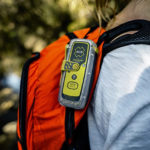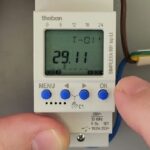The beauty of camping is getting a taste of what it’s like to be self-sufficient and experience a simpler lifestyle away from the city, even if it’s only for a couple of days. This simpler lifestyle however does not include power outlets and light switches, which might pose an inconvenience for all of us who aren’t blessed with X-ray vision. That’s why getting ready for camping also means getting yourself a nice headlamp.

As opposed to flashlights, headlamps for camping give you the ability to use both hands which is incredibly convenient when performing activities such as setting up a tent at night, making a fire, or climbing a rock. Even if you have a large lantern at your camp site, it can only be used as general lighting. But with a headlamp, you can direct the light to produce a focused beam where you most need it, like for instance looking for something inside the tent. A head lamp can also be a life-saving asset in case you urgently need to find something in your first aid kit.
Of course, not all headlamps for camping are the same. Some have a wider beam and are called floodlights. A floodlight can produce plenty of light but only at a short distance, making it useful for things like repairs or reading. If you need a headlamp with a long distance beam to help you navigate a trail after nightfall, check out the models with a spot (focused or narrow) beam. The best spotlights are able to cast a beam as far as 150 meters. But for greater convenience and versatility, we recommend adjustable headlamps which can allow you to switch between a floodlight and a spotlight whenever you need to.
When looking for a headlamp, a thing you should always check before buying is the IP rating. IP refers to International Protection Marking and it rates the level of protection of a headlamp’s mechanical and electrical parts against liquid and solid particles. For instance, if a headlamp has a an IPX4 rating, it can withstand some light splashes but not heavy rain. Since Australian weather is unpredictable, it’s best to get a headlamp which is water resistant in case of heavy rain. Any headlamp with a rating of IPX7 and above can withstand heavy exposure to water, while an IPX10 can survive complete water submersion.
Unlike in the past when torches were able to last only a couple of days of use, today, thanks to LED technology, headlamps are able to offer brighter outputs and a longer lasting battery life. This means you can choose a headlamp that’s powerful enough to illuminate your way while you’re trying to find your way to the camp site after dark, and what’s better – it will last usage of several hours a day for over a month before the battery runs out. On the topic of batteries, consider lithium models which operate more efficiently in the cold than alkaline ones and they also last much longer.






















